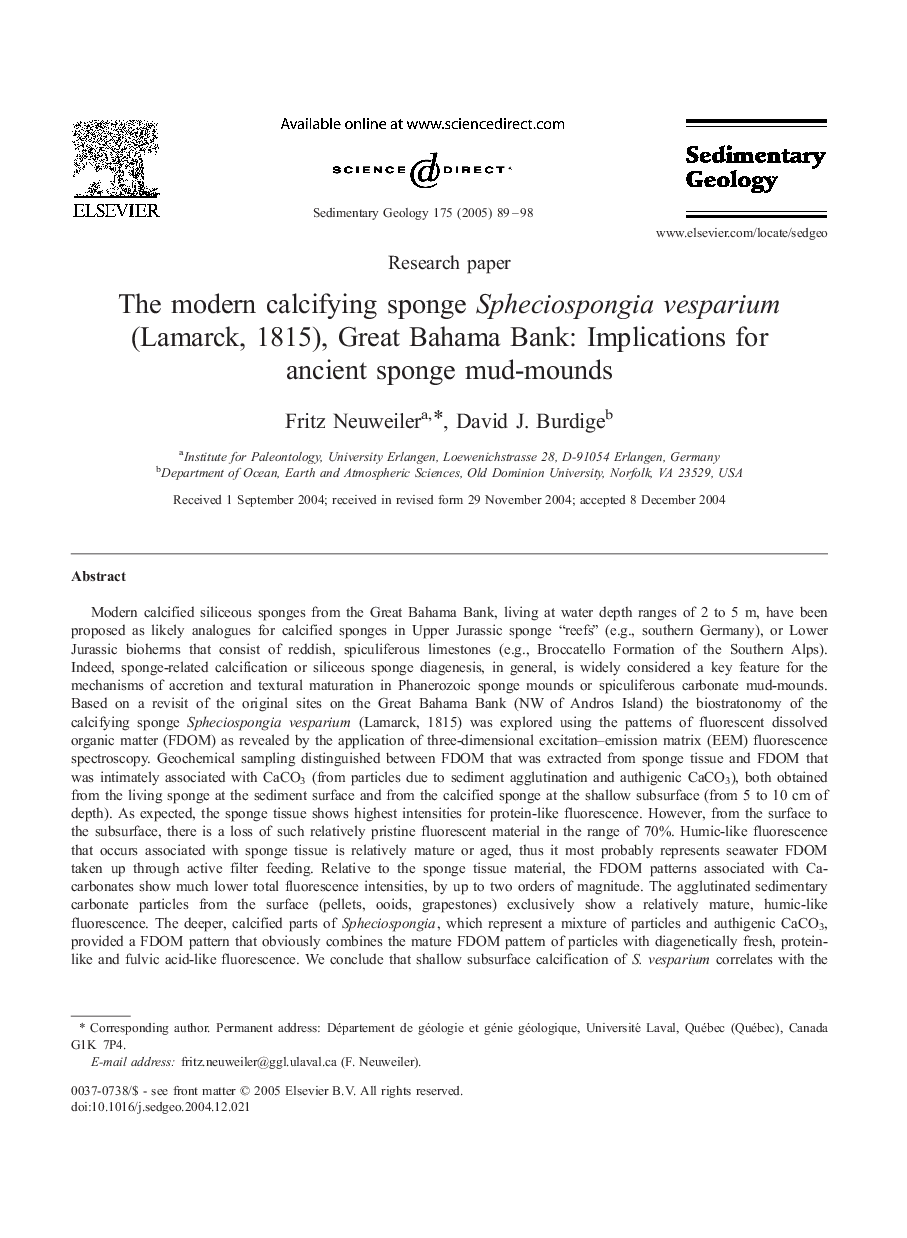| Article ID | Journal | Published Year | Pages | File Type |
|---|---|---|---|---|
| 9526163 | Sedimentary Geology | 2005 | 10 Pages |
Abstract
Modern calcified siliceous sponges from the Great Bahama Bank, living at water depth ranges of 2 to 5 m, have been proposed as likely analogues for calcified sponges in Upper Jurassic sponge “reefs” (e.g., southern Germany), or Lower Jurassic bioherms that consist of reddish, spiculiferous limestones (e.g., Broccatello Formation of the Southern Alps). Indeed, sponge-related calcification or siliceous sponge diagenesis, in general, is widely considered a key feature for the mechanisms of accretion and textural maturation in Phanerozoic sponge mounds or spiculiferous carbonate mud-mounds. Based on a revisit of the original sites on the Great Bahama Bank (NW of Andros Island) the biostratonomy of the calcifying sponge Spheciospongia vesparium (Lamarck, 1815) was explored using the patterns of fluorescent dissolved organic matter (FDOM) as revealed by the application of three-dimensional excitation-emission matrix (EEM) fluorescence spectroscopy. Geochemical sampling distinguished between FDOM that was extracted from sponge tissue and FDOM that was intimately associated with CaCO3 (from particles due to sediment agglutination and authigenic CaCO3), both obtained from the living sponge at the sediment surface and from the calcified sponge at the shallow subsurface (from 5 to 10 cm of depth). As expected, the sponge tissue shows highest intensities for protein-like fluorescence. However, from the surface to the subsurface, there is a loss of such relatively pristine fluorescent material in the range of 70%. Humic-like fluorescence that occurs associated with sponge tissue is relatively mature or aged, thus it most probably represents seawater FDOM taken up through active filter feeding. Relative to the sponge tissue material, the FDOM patterns associated with Ca-carbonates show much lower total fluorescence intensities, by up to two orders of magnitude. The agglutinated sedimentary carbonate particles from the surface (pellets, ooids, grapestones) exclusively show a relatively mature, humic-like fluorescence. The deeper, calcified parts of Spheciospongia, which represent a mixture of particles and authigenic CaCO3, provided a FDOM pattern that obviously combines the mature FDOM pattern of particles with diagenetically fresh, protein-like and fulvic acid-like fluorescence. We conclude that shallow subsurface calcification of S. vesparium correlates with the initial stage of sponge biomass humification. Such a mechanism of biomass transformation, i.e., from biopolymers to geopolymers via degradation and condensation, has also been suggested for the large-scale development of carbonate (sponge) mud-mounds. Therefore, we consider the modern calcifying siliceous sponge S. vesparium (Lamarck, 1815) a potential pardigm to decipher in more detail the geologically important process of biomass-induced calcification or organomineralisation with its subsequent effect of pore water FDOM preservation and sediment lithification.
Keywords
Related Topics
Physical Sciences and Engineering
Earth and Planetary Sciences
Earth-Surface Processes
Authors
Fritz Neuweiler, David J. Burdige,
